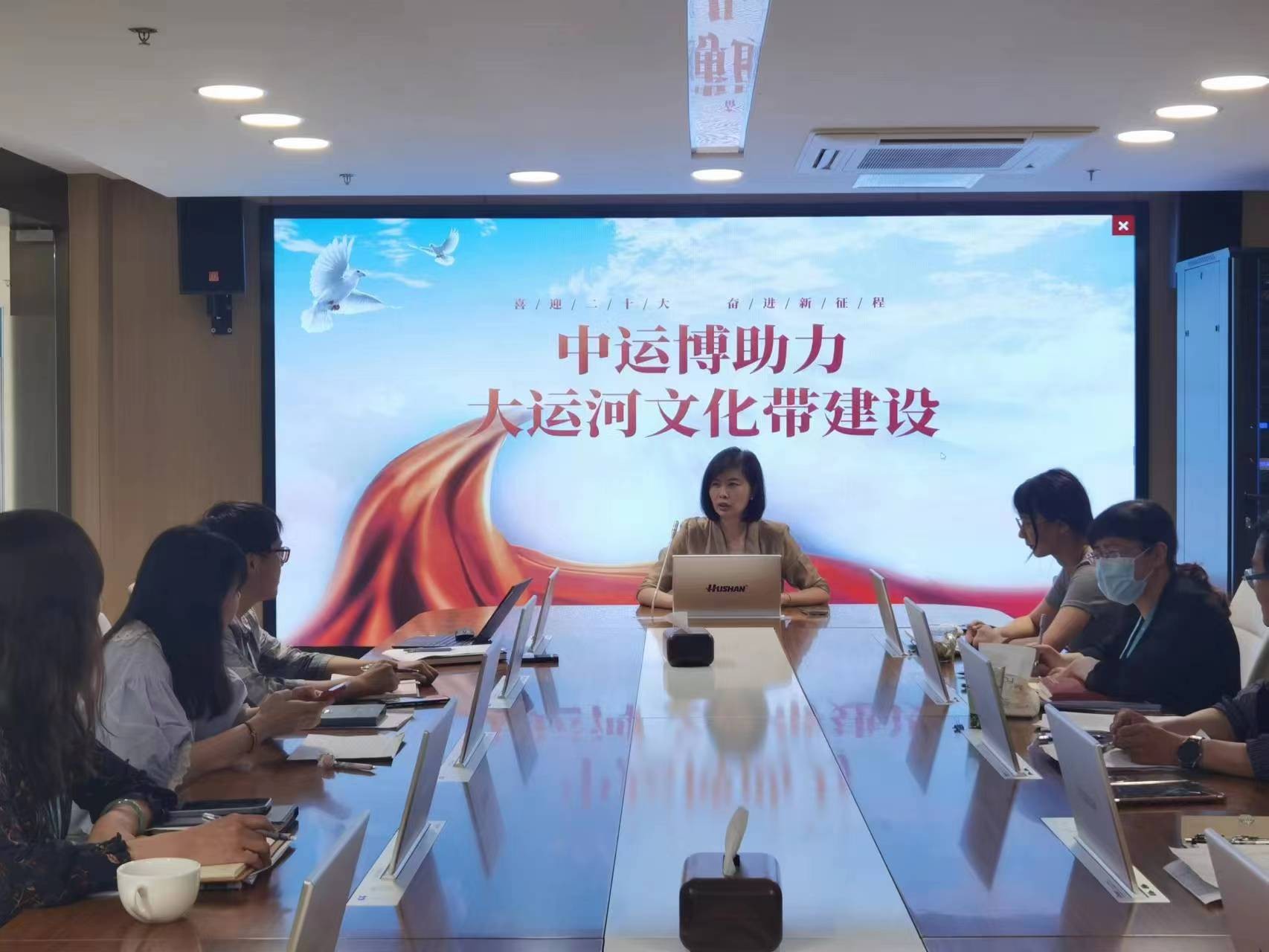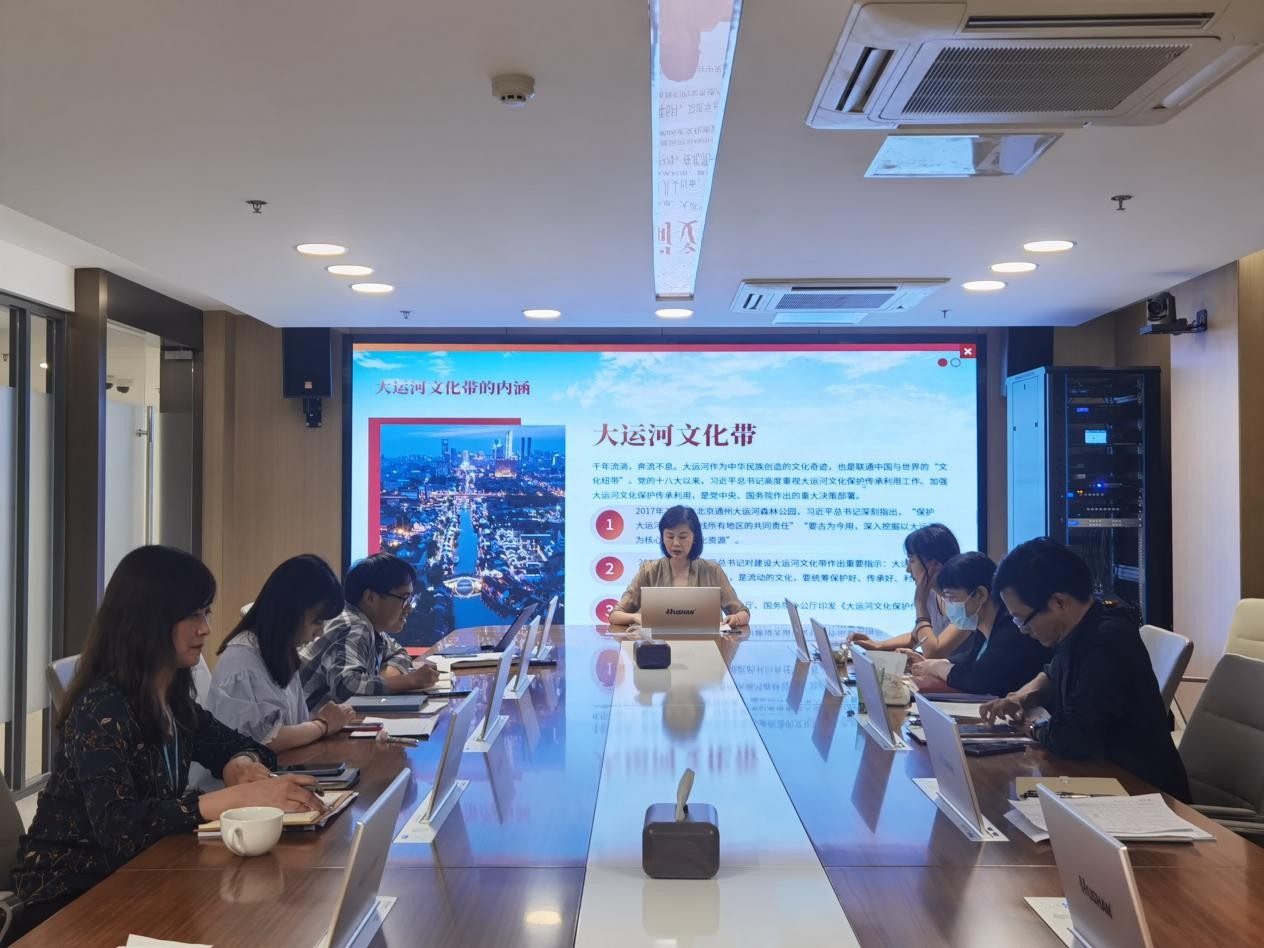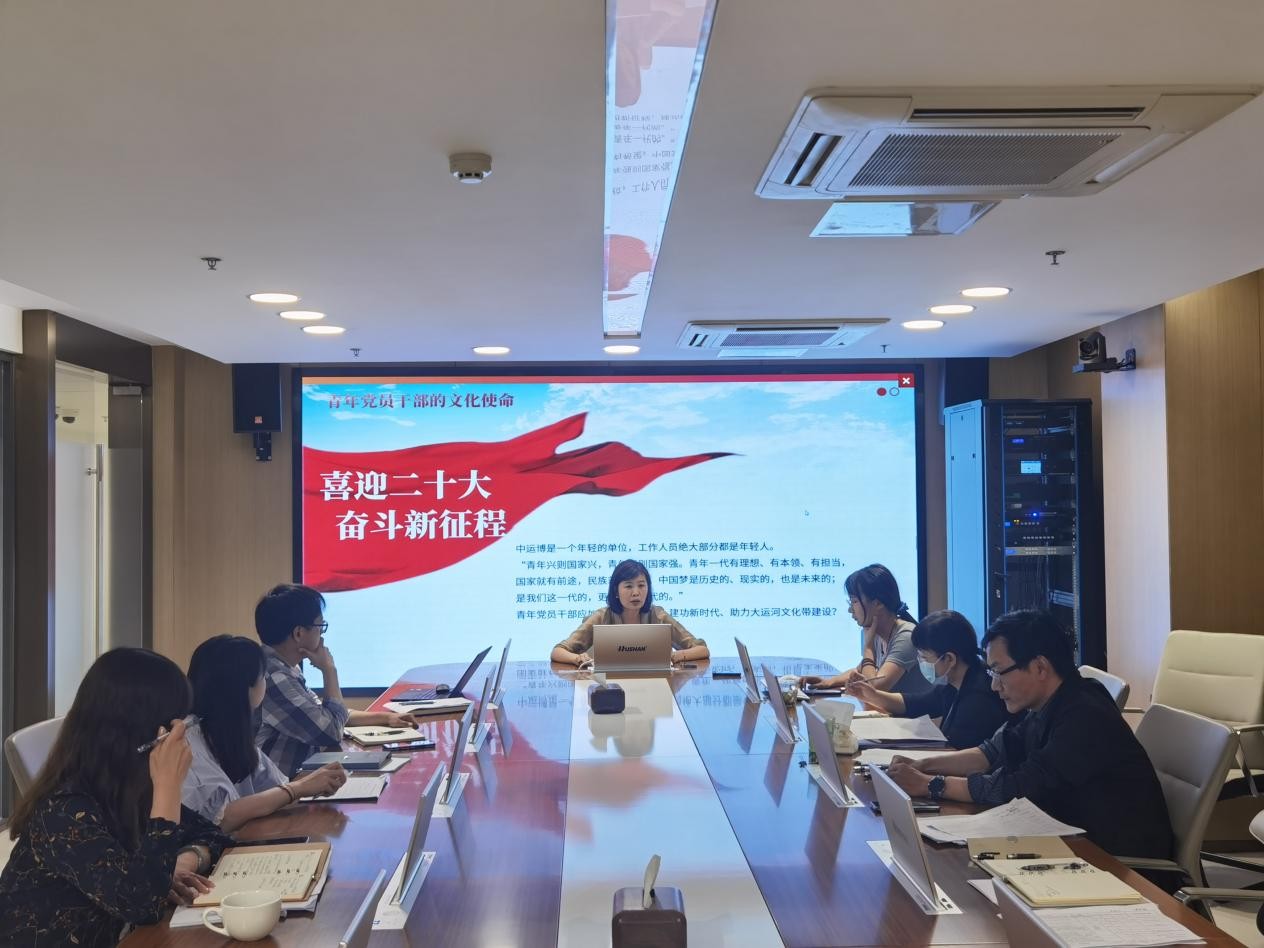On July 25, Zheng Jing, Party branch secretary and director of the CGCM, delivered a lecture “Welcome the Convening of the 20th CPC National Congress and Forge Ahead on a New Journey – CGCM Helps Build the Grand Canal Cultural Belt” to persons chiefly in charge at the middle level and above and young Party members.

Secretary Zheng Jing elaborated on three key points: the connotative significance of the Grand Canal Cultural Belt, the measures taken by the CGCM to support the building of the Cultural Belt, and the cultural mission of young Party cadres in the new era in assisting in the building of the Grand Canal Cultural Belt and National Cultural Park.
Firstly, Zheng Jing expounded the connotation and importance of the building of the Grand Canal Cultural Belt by delving into the historical background of the Grand Canal of China, the spirit of the important instructions of General Secretary Xi Jinping and the Party Central Committee regarding the building of the Grand Canal Cultural Belt and National Cultural Park, and important documents and circulars relevant to the initiatives.

Zheng then outlined the specific actions taken by the CGCM, as a landmark project best representing the development of the Grand Canal Cultural Belt and National Cultural Park and as an “encyclopedia” of the Grand Canal of China. These measures were detailed in four aspects: enhancing services to consistently meet the evolving needs of the public for an improved quality of life; improving communication strategies to expand the museum’s influence; fortifying the infrastructure to bolster the preservation of cultural relics; and augmenting support systems to enhance internal management practices continually.
Zheng then outlined the specific actions taken by the CGCM, as a landmark project best representing the development of the Grand Canal Cultural Belt and National Cultural Park and as an “encyclopedia” of the Grand Canal of China. These measures were detailed in four aspects: enhancing services to consistently meet the evolving needs of the public for an improved quality of life; improving communication strategies to expand the museum’s influence; fortifying the infrastructure to bolster the preservation of cultural relics; and augmenting support systems to enhance internal management practices continually.










